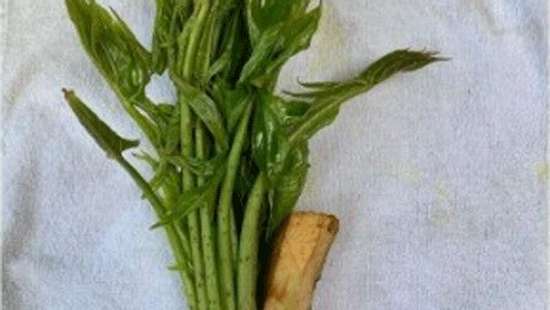Reply To:
Name - Reply Comment

The consumption of kohila (Lasia Spinosa) as a vegetable has gone up by 40 percent in Sri Lanka during the height of the economic crisis in 2021 and 2022, a research report released by the Hector Kobbekaduwa Agricultural Training and Research Institute revealed.
According to the report, most of the people had used whatever vegetable they could get around for food and the consumption of beans had decreased by 30 percent, carrots by 29 percent, pumpkin by 27 percent, brinjal by 27 percent, and leafy vegetables by 10 percent.
The report revealed that 86 percent of the country's population changed their diet due to reducing the number of items used for food and another 75 per cent reduced the use of food items to prepare meals while 45 per cent reduced the frequency of eating and another 38 per cent reduced the amount of food eaten.
The Hector Kobbekaduwa Agricultural Training and Research Institute yesterday released five reports on several types of research conducted recently.
According to the report, 68 per cent of the estate sector spent most of their daily earnings on food. Also, 75 per cent of the people in Ratnapura, Ampara, Matara, and Hambantota districts have spent all the money they earn on food.
The report states that 43 per cent of the urban sector, 52 per cent of the rural sector and 67 per cent of the plantation sector suffered from food insecurity.
"From September 2021 to the end of 2022, food inflation in Sri Lanka rose to 95 per cent. The report also states that this is the worst economic crisis in the country since independence. By the fourth quarter of 2021, household consumption of adequate food had dropped to 3.4 per cent and by October 2022, 2.26 million of the country's population had stopped consuming adequate food," the report added.
When considering nutrition, 25 per cent in urban areas, 03 per cent in rural areas and 07 per cent in plantation areas did not receive protein-rich food.
"66 per cent in urban areas, 46 per cent in rural areas and 41 per cent in plantation areas are deficient in vitamin A foods. During the survey period, 56 per cent of the population did not get any food with heme iron. The survey report also confirmed that 78 per cent of the plantation sector did not consume meat and fish, which are foods with heme iron.